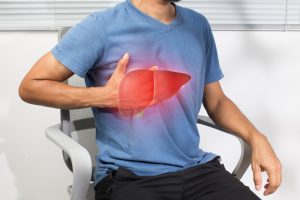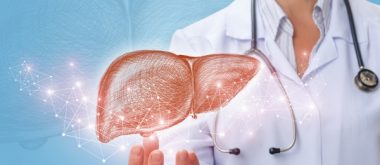Although the liver is one of the body’s most resilient organs, it is still susceptible to the effects of stress and ageing, which can lead to disease, severe scarring and failure. A team of researchers may now have found a way to turn back time and restore the liver. In experiments with mice and human liver tissue, a Duke Health research team discovered how the aging process causes certain liver cells to die. The researchers were then able to reverse this process in the animals using an investigational drug. The finding, published in the journal Nature Aging, is promising for the millions of people who have some degree of liver damage – livers that are essentially old due to the metabolic stresses of high cholesterol, obesity, diabetes or other factors.
Genetic Signature Characteristic of Old Liver Organs

According to lead author Anna Mae Diehl, M.D., Florence McAlister Distinguished Professor of Medicine at Duke University School of Medicine, the study shows that aging is at least partially reversible. Diehl and her colleagues wanted to understand how non-alcoholic liver disease develops into a serious condition called cirrhosis, in which scarring can lead to organ failure. Ageing is a major risk factor for cirrhosis in people diagnosed with non-alcoholic liver disease, also known as metabolic dysfunction-associated steatotic liver disease (MASLD). It affects one in three adults worldwide.
When examining the livers of mice, the researchers identified a genetic signature that is characteristic of old liver organs. Compared to young livers, the old organs had an abundance of genes that were activated to cause the degeneration of hepatocytes, the main functional cells of the liver. The researchers found that aging promotes a type of programmed cell death in hepatocytes called ferroptosis, which is dependent on iron. Metabolic stressors amplify this death program and increase liver damage.
Certain Drug Can Rejuvenate the Liver
Using their genetic signature of old liver organs, the researchers analyzed human liver tissue and found that the livers of people diagnosed with obesity and MASLD carried this signature, and the more severe their disease, the stronger it was. Importantly, key genes in the livers of people with MASLD were strongly activated to promote cell death by ferroptosis. This gave the researchers a definitive target.
The researchers turned back to mice and fed young and old mice a diet that triggered the development of MASLD in them. They then gave half of the animals a placebo and the other half a drug called ferrostatin-1, which inhibits the cell death pathway.
When analyzed after treatment, the livers of the animals that had been given ferrostatin-1 looked biologically like young, healthy livers – even in the old animals that had received the disease-causing diet. According to Diehl, the team also investigated how the ferroptosis process in the liver affects the function of other organs that are often damaged during the progression of MASLD. The genetic signature was able to distinguish between diseased and healthy hearts, kidneys and pancreases, suggesting that damaged livers increase ferroptotic stress in other tissues. Overall, aging has been shown to exacerbate non-alcoholic liver disease by generating ferroptotic stress, and by reducing this impact, the damage can be reversed.





